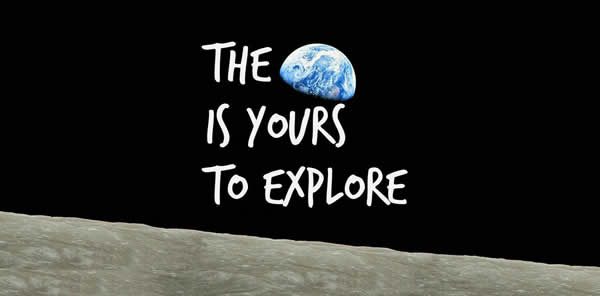HiRISE images
Big ripples near Opportunity

A piece of Mars: This shows the location of the rover Opportunity as of late March, 2014. It's been trolling around the rim of Endeavour crater. Just inside the crater, there are some large ripples (the biggest is ~10 m wide) that have formed from erosional scours in dark sediments on the crater interior walls. The rover won't ever go over there, but maybe it will climb to the other side of the rim and take some nice images of them. (HiRISE ESP_035909_1775, NASA/JPL/Univ. of Arizona) read more ❯
Uniquely martian

A piece of Mars: Now here's something that, as far as I know, can safely be labeled as "uniquely martian". These dunes (or maybe they're ripples) are ~25 m wide, and have formed from winds blowing from the upper left. Their upwind sides are smoothed by constant erosion from incident sand-laden winds, but their downwind sides are as bumpy as the surrounding surface. What makes this bumpy texture? (ESP_035305_1740, NASA/JPL/Univ. of Arizona) read more ❯
Nooks and crannies

A piece of Mars: This 521x391 m (1709x1283 ft) scene shows a rocky plain with many small impact craters (the bigger ones are ~45 m, or 148 ft across). Dark rippled sand fills the floors of the craters. Why? Once it blows in, it's hard for the sand to get out. It gets caught in the nooks and crannies of the terrain. The same way it gets caught in your bathing suit and towel at the beach. (ESP_035164_1655, NASA/JPL/Univ. of Arizona) read more ❯
When Mars gets weird

A piece of Mars: Mars can be a strange place. This is actually a sand dune on Mars not far from the north pole. Here it's imaged in the springtime when the dunes are still covered in bright CO2 frost, which is in turn overlain by yellowish dust that has fallen out of the atmosphere. The dark patch is a spot where the sunlight has penetrated the ice cover enough to allow some defrosting to begin -- the dark line in the middle is close to the true color of ice-free sand. (HiRISE ESP_025126_2640, NASA/JPL/Univ. of Arizona) read more ❯
The millipede, rewritten

A piece of Mars: Looks like a millipede, doesn't it? It's something much larger and much less poisonous. It's an ancient dune (or maybe a ripple) on Mars, that once stretched ~285 m (935 ft) from lower left to middle right. Since then it's been nearly rewritten twice. The first time, a different wind direction made smaller ripples (the millipede's "feet") that nearly erased the original shape. The second time, a cluster of craters formed, punching holes in the millipede. Maybe it was martian pest control. (HiIRSE ESP_034942_1615, NASA/JPL/Univ. of Arizona). read more ❯
Ribbons on Mars

A piece of Mars: Bet you didn't know there were ribbons on Mars. Long, sweeping, velvety lines, delicately frayed at the ends. These are actually ancient ripples, formed by a wind blowing from right to left. Stripes on the ripples and on the ground between them show the ancient ripple interiors, exposed by erosion. The long ripple in left center is 175 m (574 ft) long. (HiRISE ESP_016136_1525, NASA/JPL/Univ. of Arizona) read more ❯
Lighting effects

A piece of Mars: It's winter in the southern hemisphere, and dunes like these are covered in bright white CO2 frost. The sun is near the horizon (shining from the top of the image), so it creates stark shadows. That can make doing science tough, but it's the best way to show off the beauty of the dunes. Can you tell which way is up here, which way is down, and when you're looking at a inherent change in the surface color vs. sun and shadows? (ESP_034922_1385, NASA/JPL/Univ. of Arizona) read more ❯
Swoosh

A piece of Mars: What is this big swoosh? It's a big dark dune. The dark/light striping across it is found in all of the dunes in this area, but what is it? We're probably seeing the inside of the dune: the wind may so strong here that it erodes the highest point of the dune, showing off the interior structure. (HiRISE ESP_034909_1744, NASA/JPL/Univ. of Arizona) read more ❯
There's ripples and then there's ripples

A piece of Mars: On the floor of a crater in the southern midlatitudes, there's a field of ripples. But wait, there are big ones that are very sinuous and small ones that are not. Why? Both are ripples, but they're different kinds of ripples. The smaller ones (~3 m, or ~10 ft) are probably made entirely of sand, while the larger ones (~15 m, or 50 ft) are older and they're probably made of a mixture of different grain sizes. (ESP_034801_1300, NASA/JPL/Univ. of Arizona). read more ❯
Yes, this is a bit of windy Mars. Really.

A piece of Mars: Yep, this is really Mars. It's a tiny bit (600x450 m) of the southwestern side of a large dune in the southern midlatitudes. The dark lines are furrows that are thought to be carved by blocks of CO2 ice that slide down in the spring. The tiny stripes are ~4m wavelength windblown ripples that are just starting to get covered in seasonal frost. Both the furrows and ripples are likely to be active today. (ESP_034234_1255, NASA/JPL/Univ. of Arizona) read more ❯